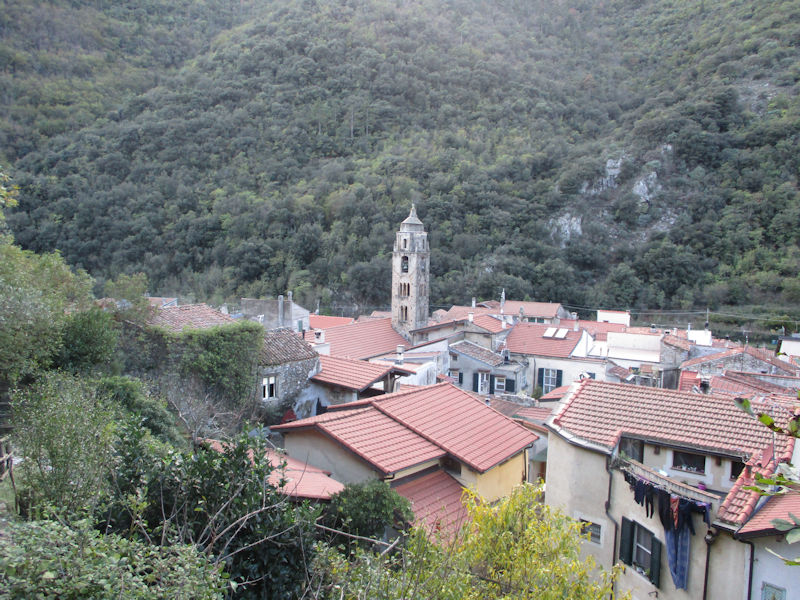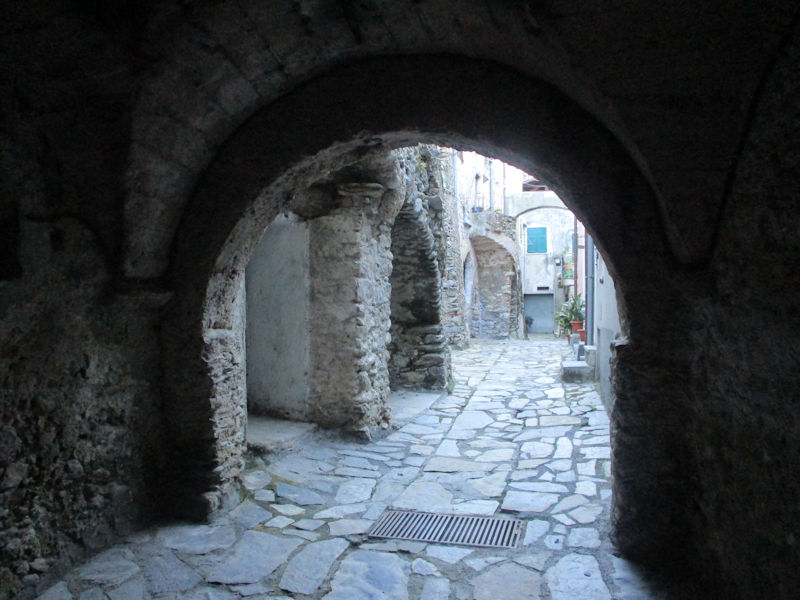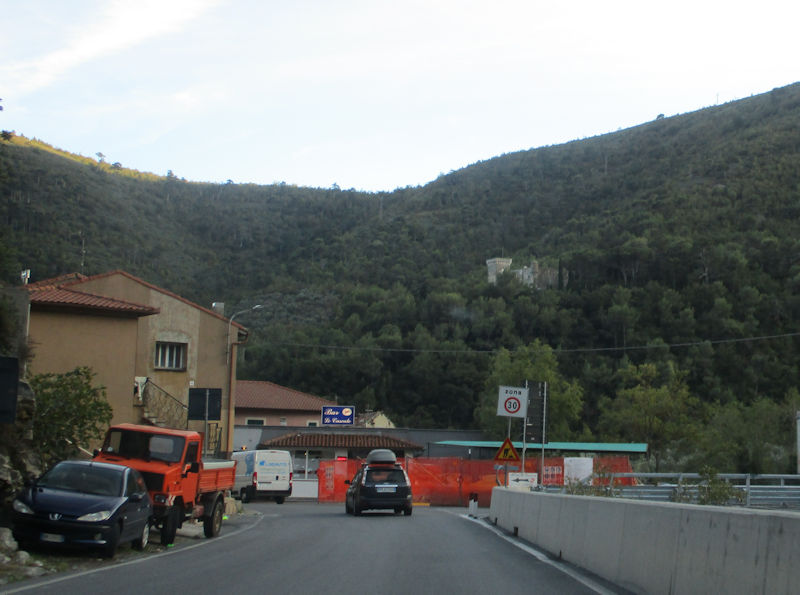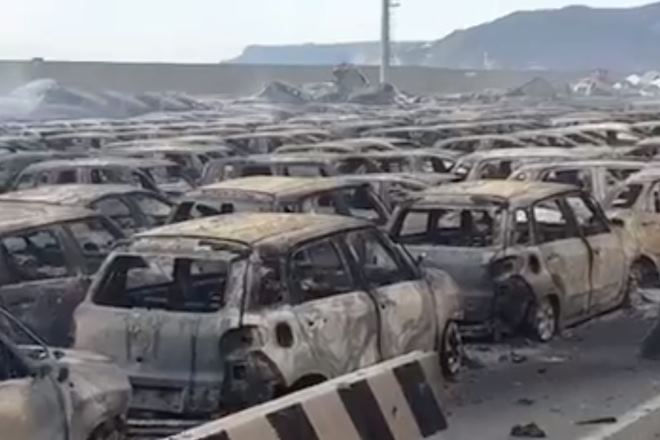You may not find this terribly rewarding unless you're included here, so this is a good time for casual and random browsers to turn back before they get too caught up in the sweep and majesty of the proceedings and can't let go.
30 October 2018

We've just been visiting Castelvecchio di Rocca Barbena -- that's probably it up on the hillside -- and now we're back onto the SP582 coming 2km farther down to the well-preserved medieval village of Zuccarello.

We've parked at the north end of the village, which consists basically of a single street, with a few additional complications along the way, that runs parallel to the SP582 on the opposite side of the Torrente Neva.

Zuccarello is first documented from April 1248, with a deed (which still exists in the town archives) between the Marquises of Clavesana, of the Clavesana branch of the vast Del Vasto family, and representatives of the Val Neva, recognizing the borgo that had grown up at the foot of the hill upon which the castle stood; the castle itself is attested from 1233 but certainly existed quite a bit earlier than that. The Clavesana authorities presented the town with their statutes governing the fief in 1281.
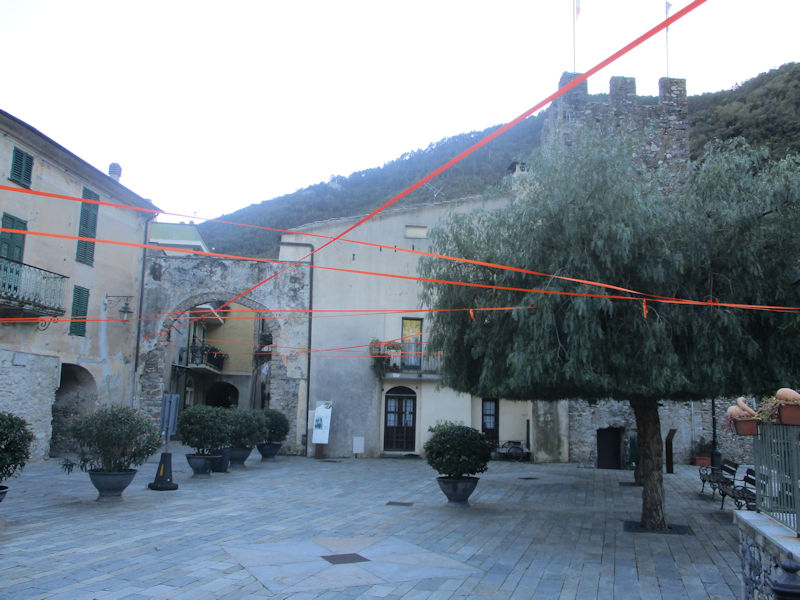
This is the northern city gate, the Porta Soprana, originally with the adjacent embattled tower part of the medieval city walls.

That's Castelvecchio up on the hill -- When in 1326 Enrico del Carretto married a daughter of Enrico di Clavesana, half of the properties of the fiefs of Zuccarello and Castelvecchio came into the Carrettesca family of Finale on the coast, and in 1335 another Clavesana daughter's dowry brought the other half into the family.

The mighty Torrente Neva. The Val Neva has always been important as a communication route over the mountains to the Piedmont plains, for pilgrims and for merchandise, most especially for salt, so these strongholds overlooking the traffic were strategically desirable, and frequently fought over.
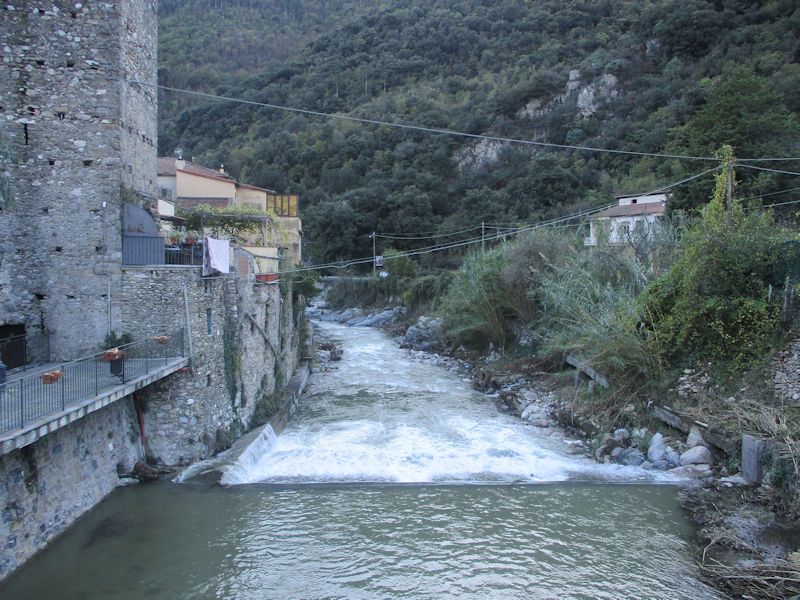
The Torrente Neva
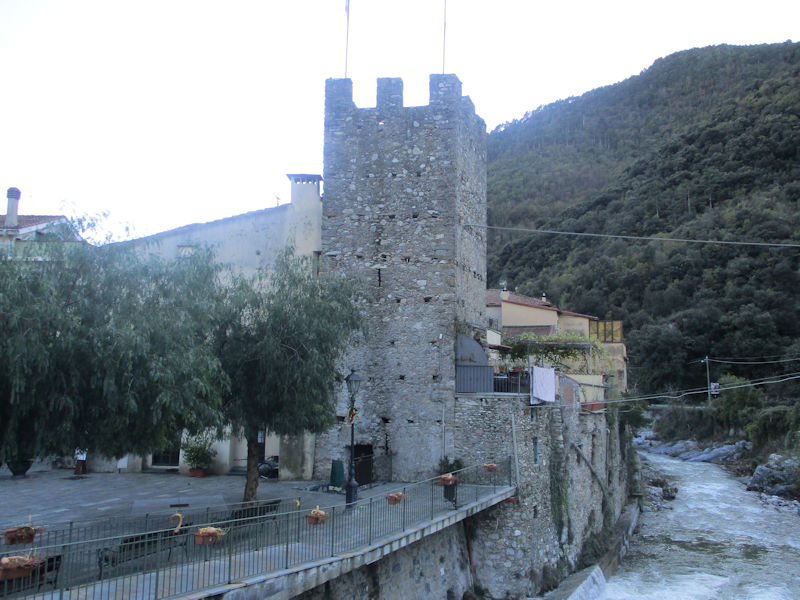
And the medieval tower guarding the town from threats from the north
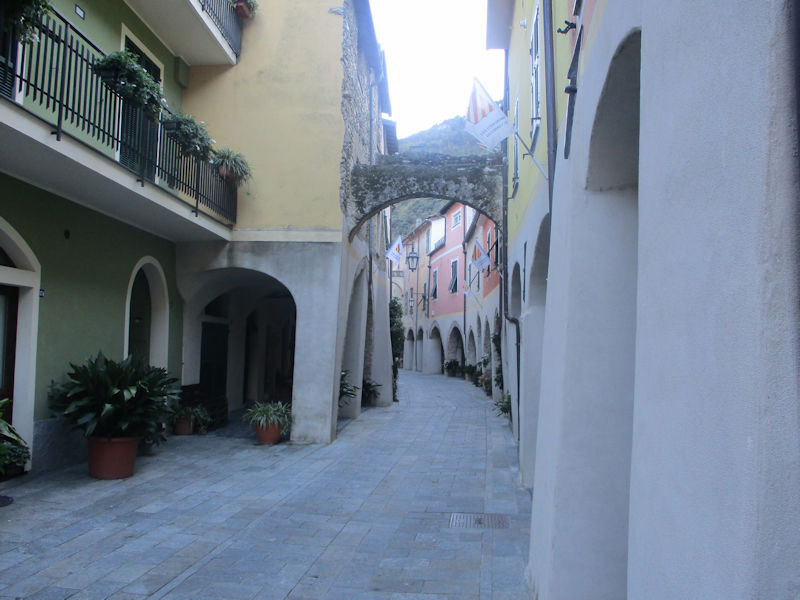
The town of arcades -- Zuccarello was been recognized as amongst the Borghi più Belli d'Italia, or most beautiful towns in Italy. This is the Via Armando Tornatore (whoever he might be), the main drag.
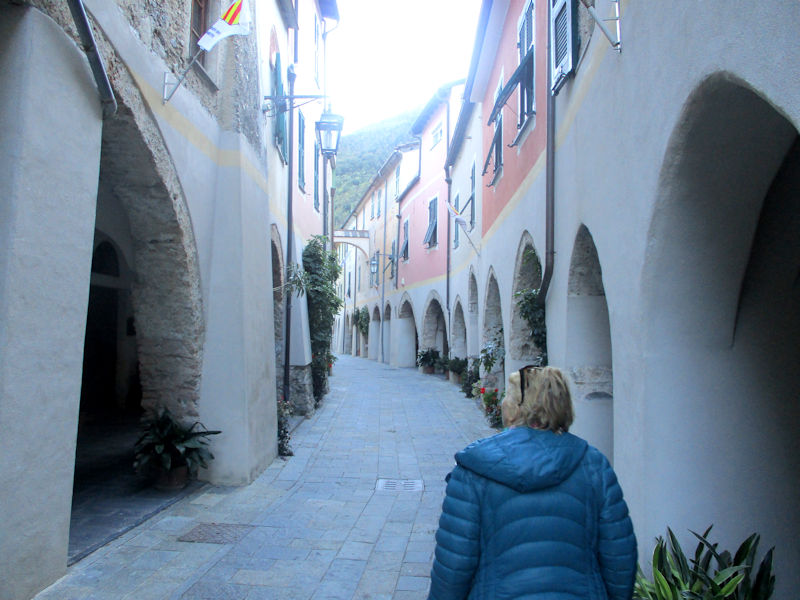
The historic old town (which, townwise, is pretty much all there is) runs about 350m along this road to the southern gate.
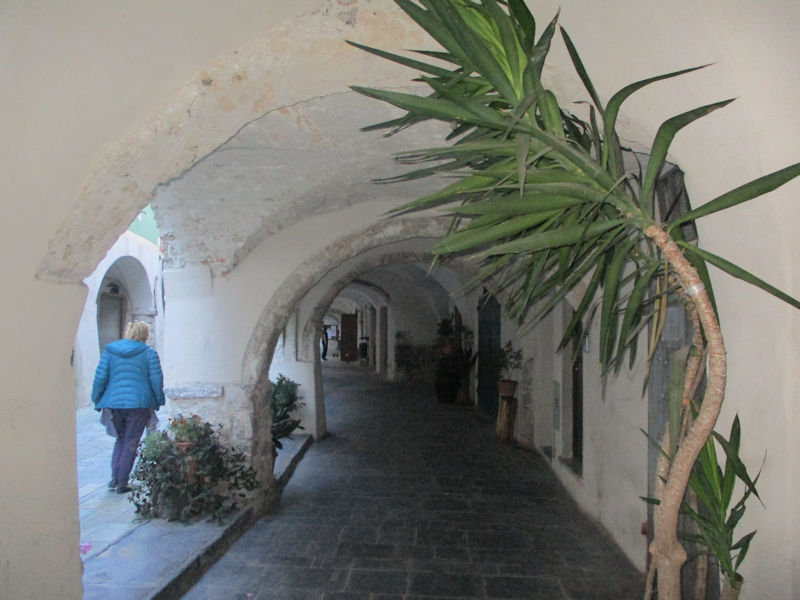
By 1397, Carlo I del Carretto had rounded up allegiances from a lot of the local castles and villages, including Castelvecchio di Rocca Barbena, and he got himself made the Marquis of Zuccarello, basing his family and friends in the castle up on the hill and in a suitable residence here in the town centre. By 1449 the Zuccarello Marquises had become vassals of the Republic of Genoa, at the same time that they were cultivating the protection of the Duchy of Milan.

A thoughtful melding of the old and the new

This is the parish church of San Bartolomeo, which is attested from 1321 but almost certainly dates from the time of the founding of the town.
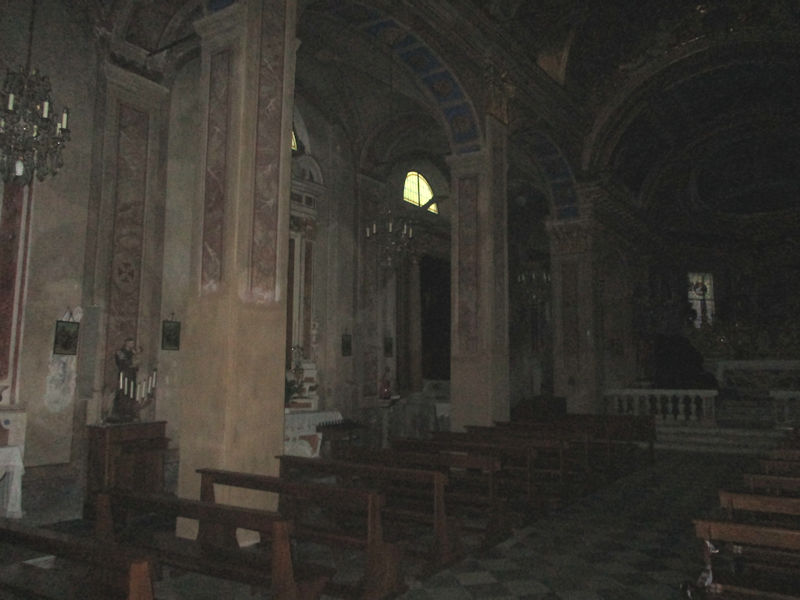
It's very dark inside -- we only really got a look at the interior after getting home and pumping up the Brightness controls on it.
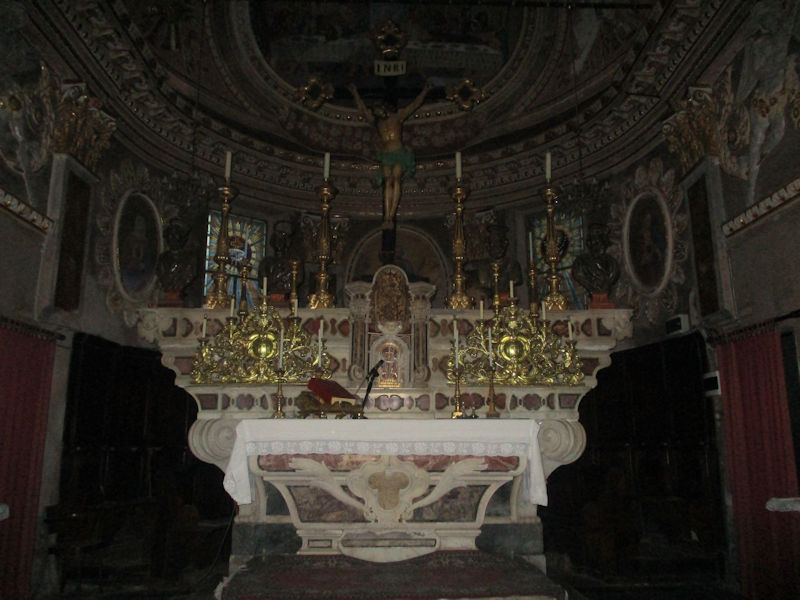
A very busy altar
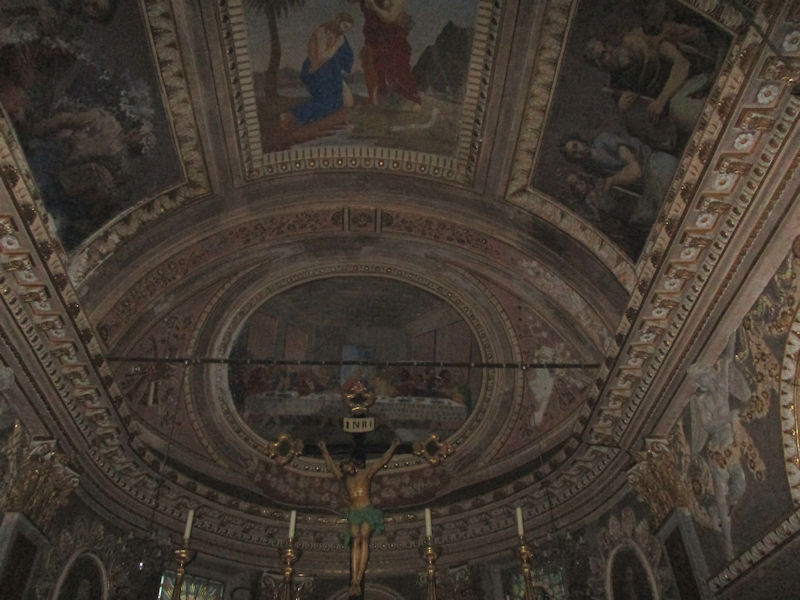
There are frescoes in abundance from the 15th to the 19th century, but in this light we can't really see any of them very well. We should have been prepared to whip flashlights out of our pockets, like Bendor Grosvenor on the BBC art history TV shows.
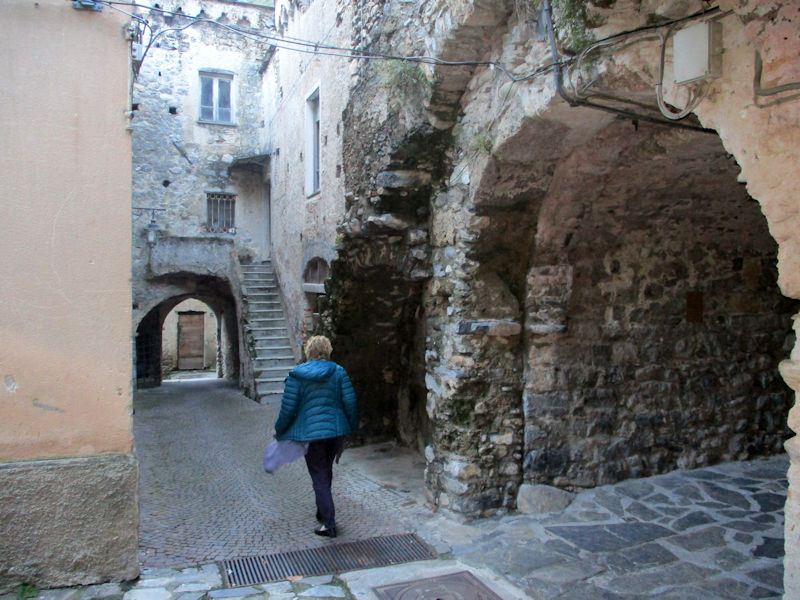
So we'll carry on -- down one of the narrow side streets, for which they seem to use the word caruggi, which we recall from the word for the cramped medieval streets in Genoa, 'alleys' basically, except that in their time they were also thoroughfares.
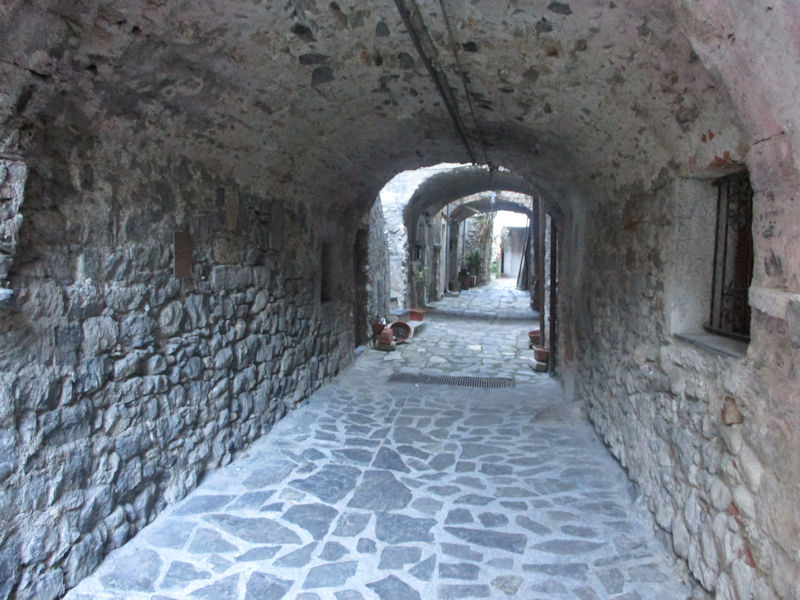

Keep your fingers away from the cage.
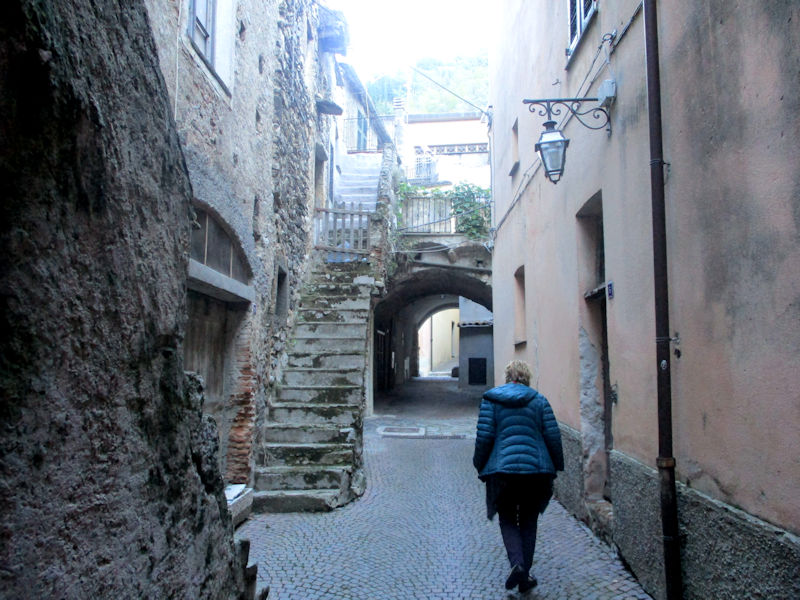
Caruggio scene
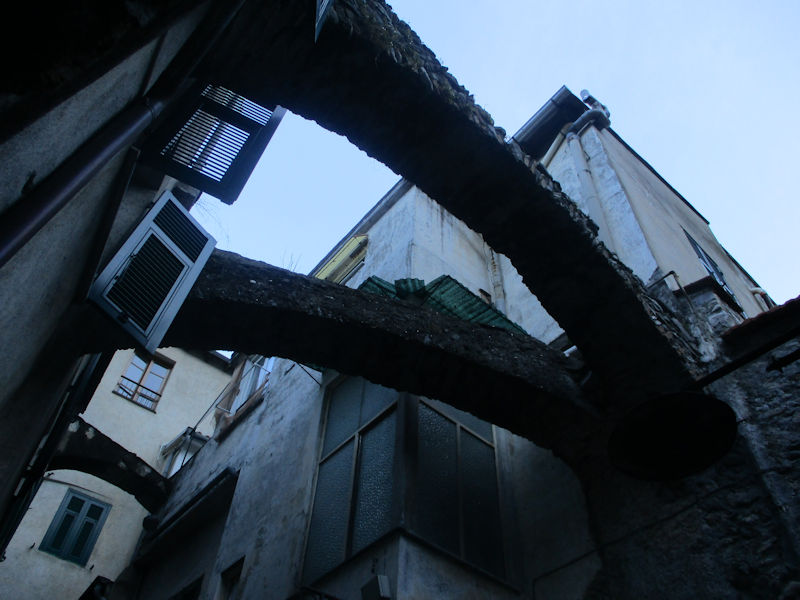
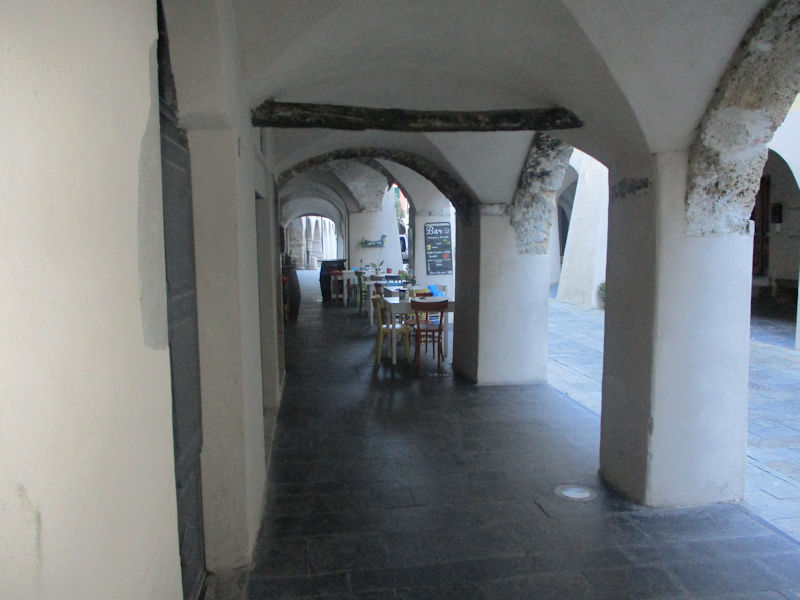
Back to the main street
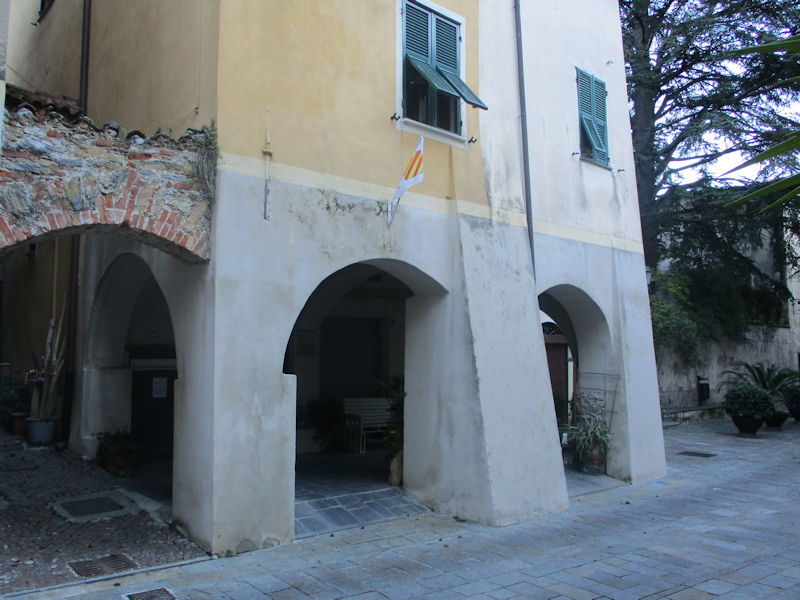
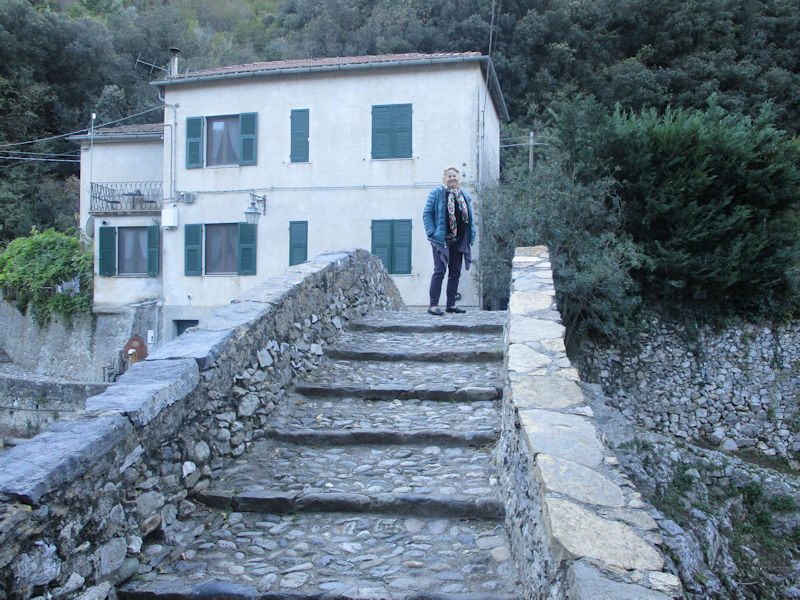
On the Ponte sul Torrente Neva, of late medieval origins, according to the town's website

The Strada Provinciale 582 is running by on the far side.

Torrente Neva scenes
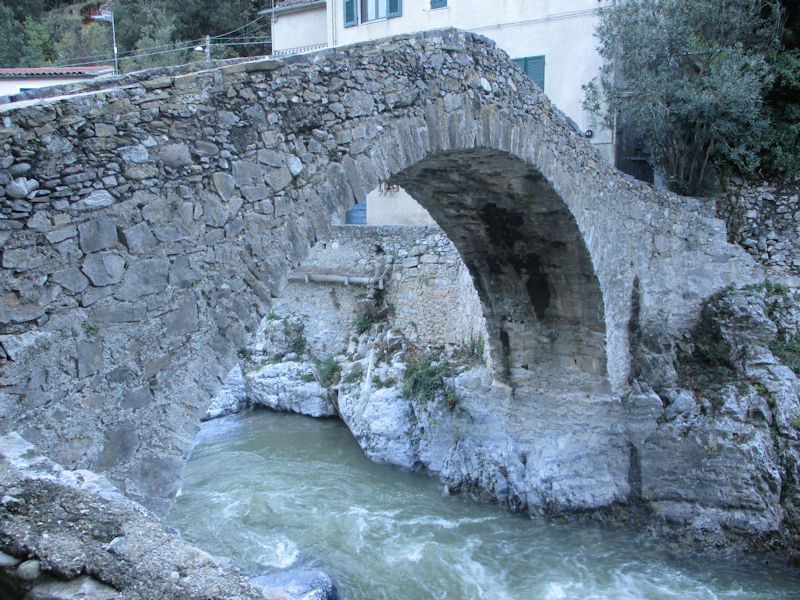
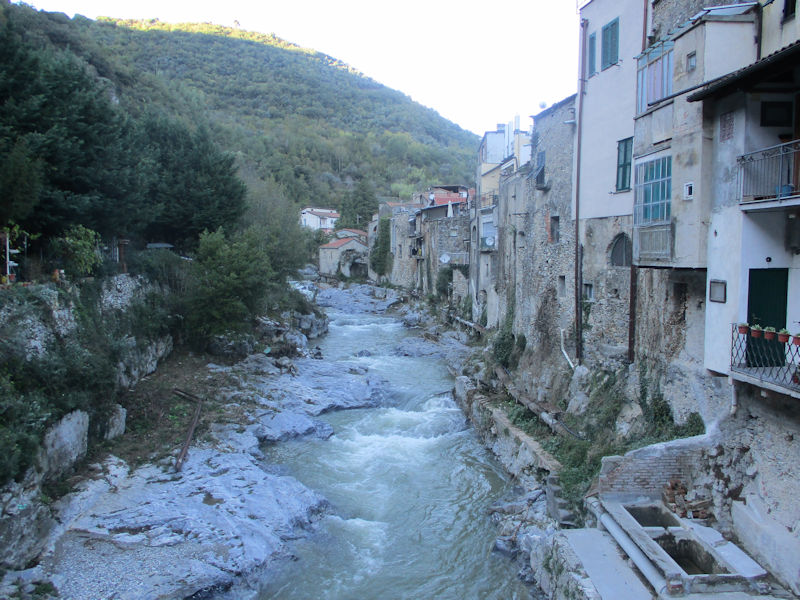
Looking upstream
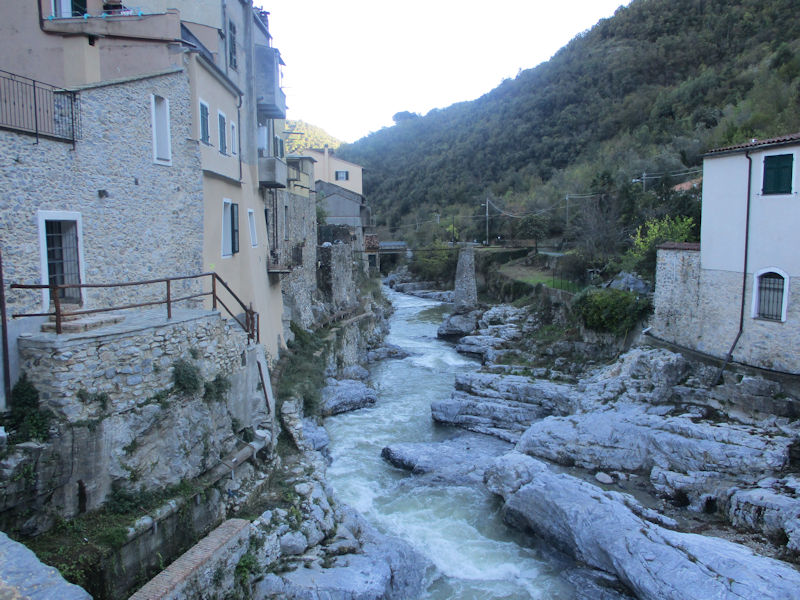
Looking downstream
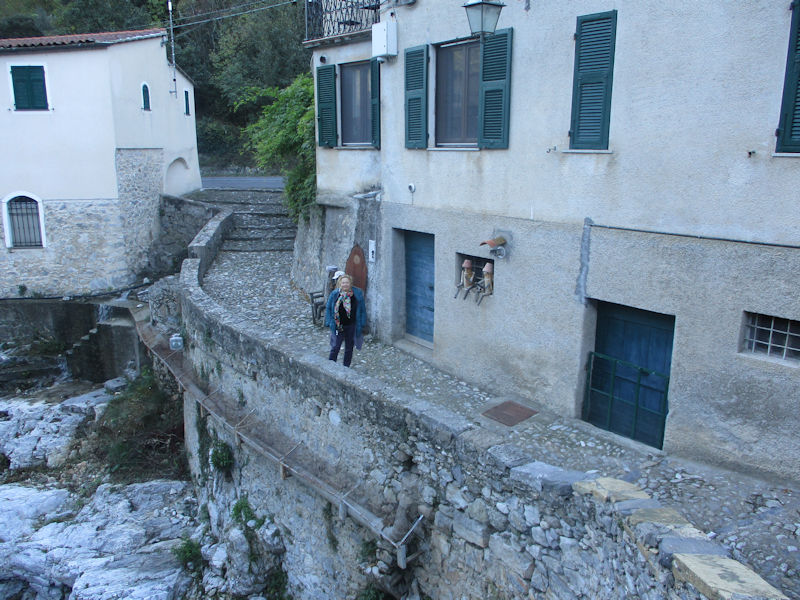
Looking at Kristin
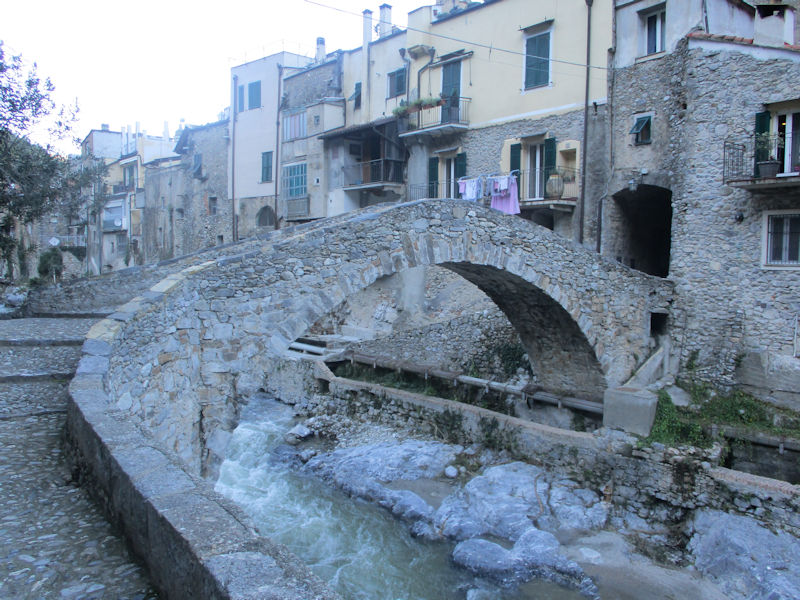
Looking at the bridge
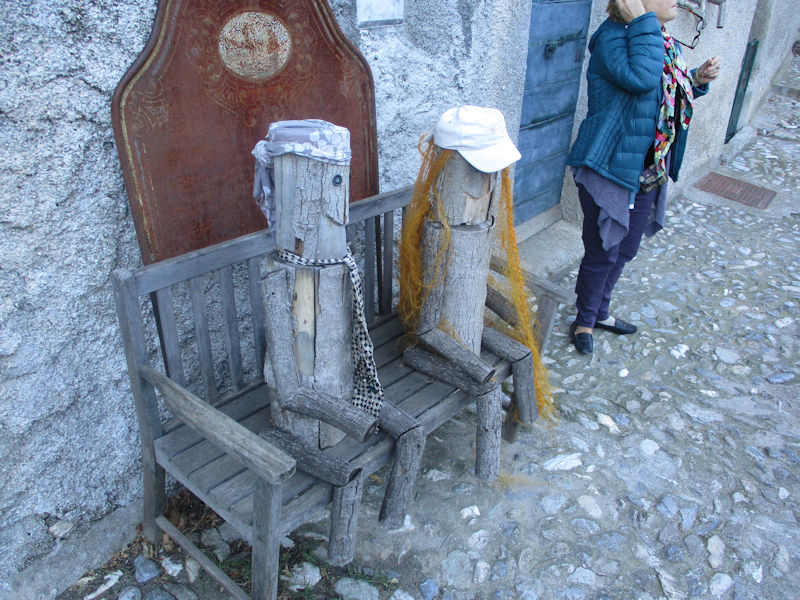
Looking at the Wood People
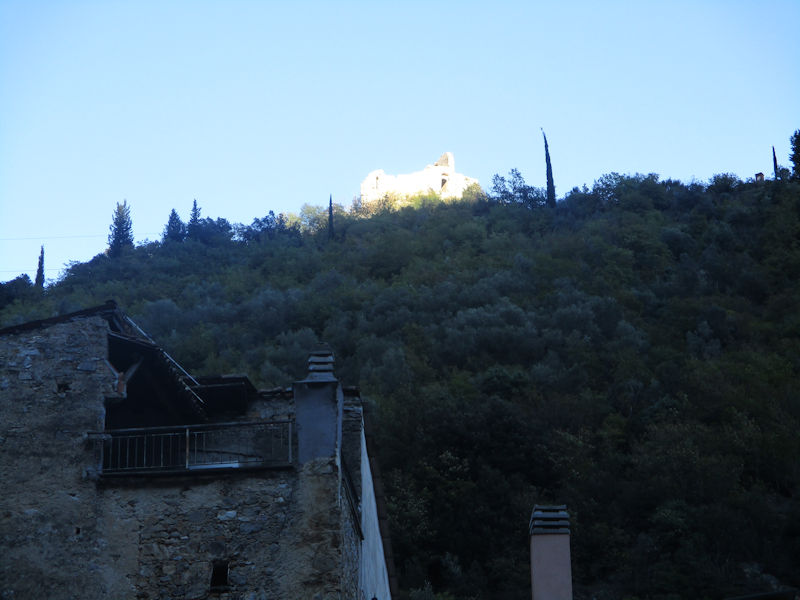
The castle on the hill, still in sunlight. We'll get up to see it if we have time.
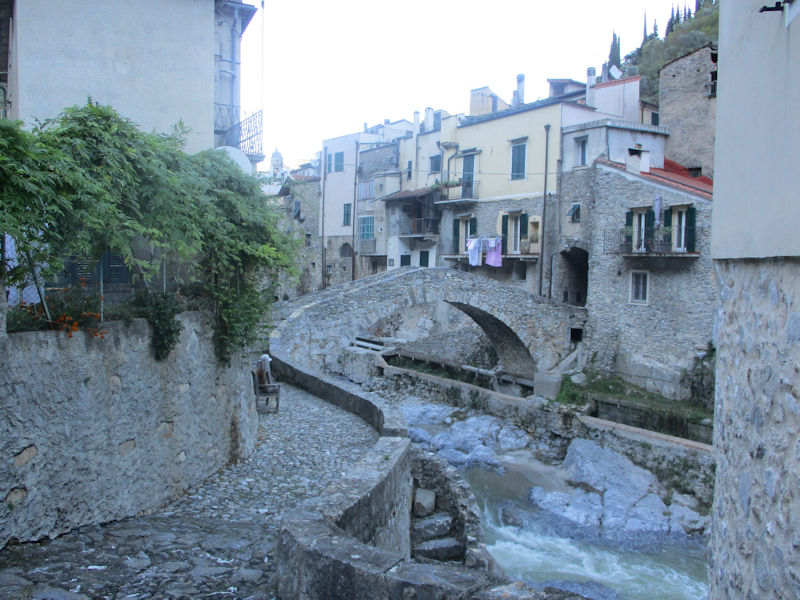
One more look at the beautiful bridge
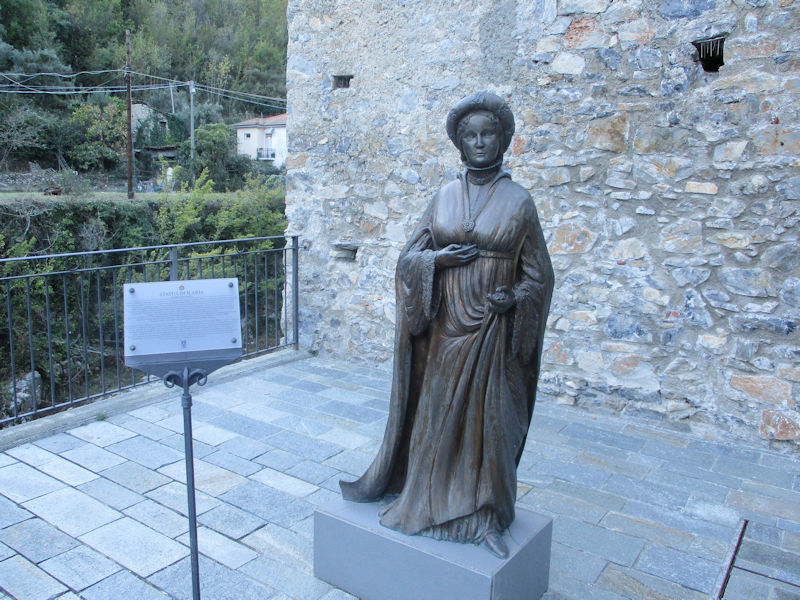
This, just outside the southern city gate, the Porta Sottana, is a memorial by Flavio Furlani to the Lady Ilaria, daughter of Carlo del Carretto, the first Marquis of Zuccarello, who was born in 1379 and in January 1403 was married to Paolo Guinigi, Lord of Lucca, in a marriage said to have been encouraged by Giangaleazzo Visconti, the Duke of Milan, to bring two of his supporters' families together.

Paolo was a tough bird, but he was evidently besotted with Ilaria, and when after the birth of two children she died, evidently in childbirth, in December 1405, he commissioned a funerary monument to her by Jacopo della Quercia, a stunning work now in the Lucca Cathedral that was completed in 1407 and recently restored.

Flavio Furlani seems to have based his likeness of Ilaria on this representation here from life. She's not actually in the sarcophagus, though -- she's in the Guinigi family chapel in Lucca's Church of San Francesco.
|
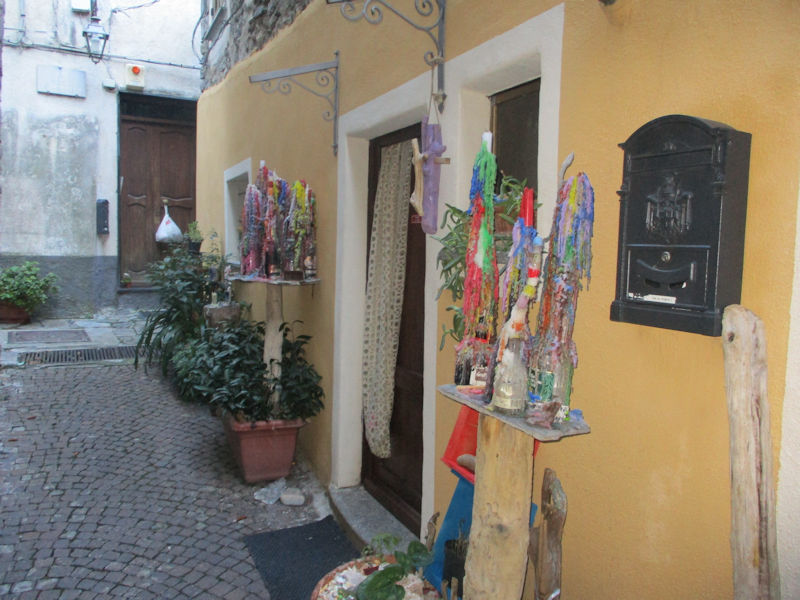
A few of the backstreet caruggi
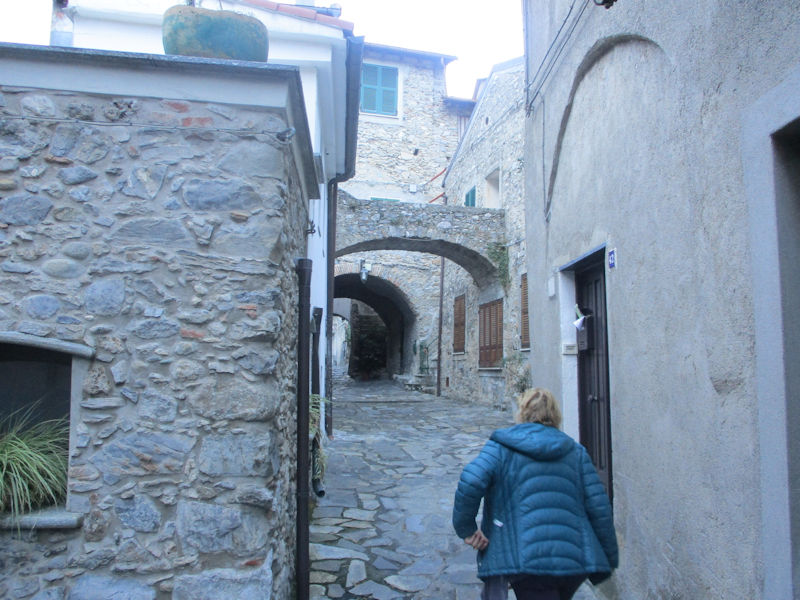
Working uphill a little ways
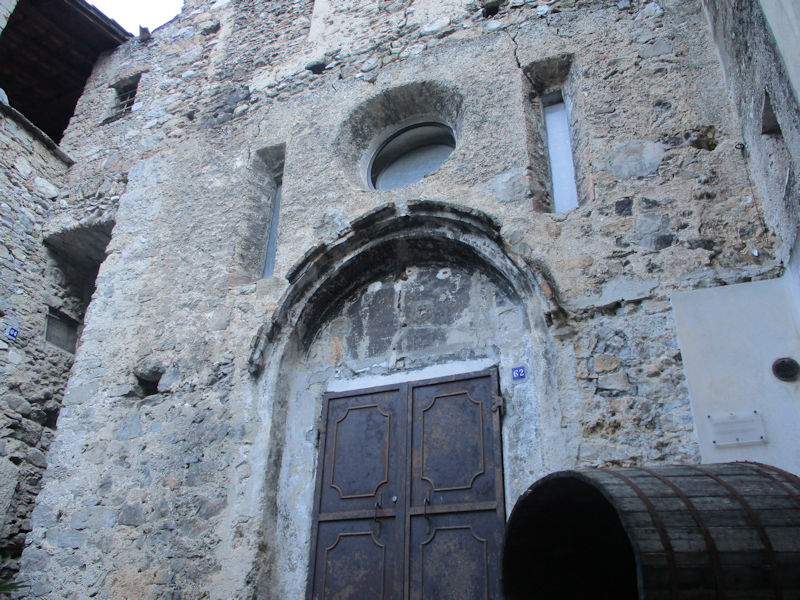
The Quinzio Delfino Theatre, occupying the lower floor of the 17th century Oratory of Santa Maria Nascente -- still in use, apparently, despite the look of it.
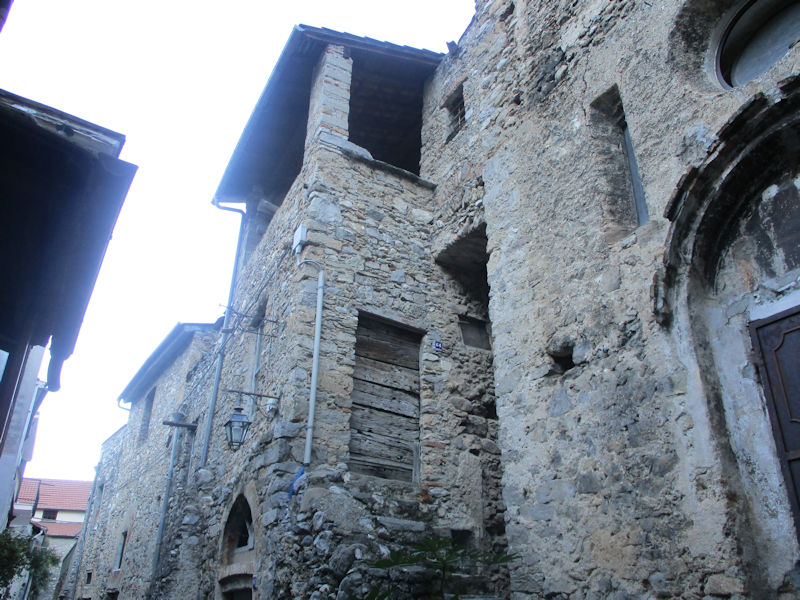
We're on the Via Giuseppe Garibaldi at the moment.

St Bartholomew's belltower . . .

. . . zoomed.
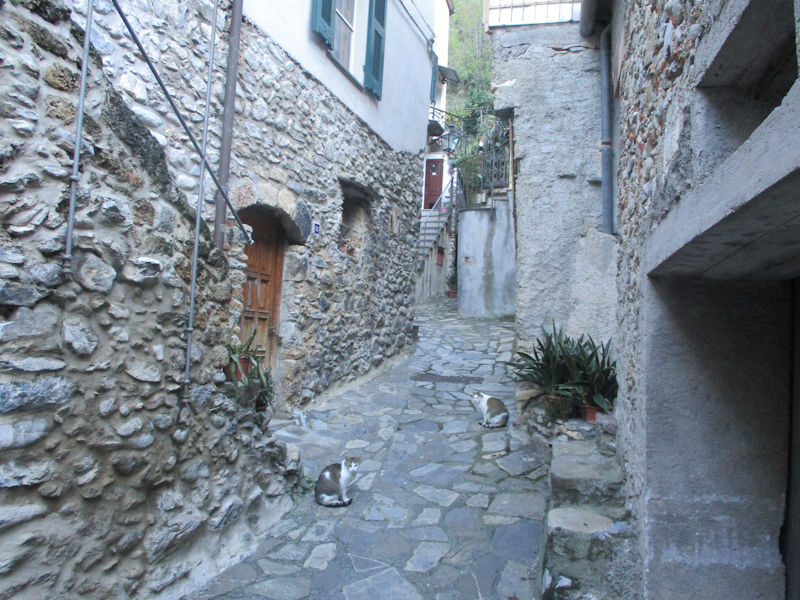
A feline standoff
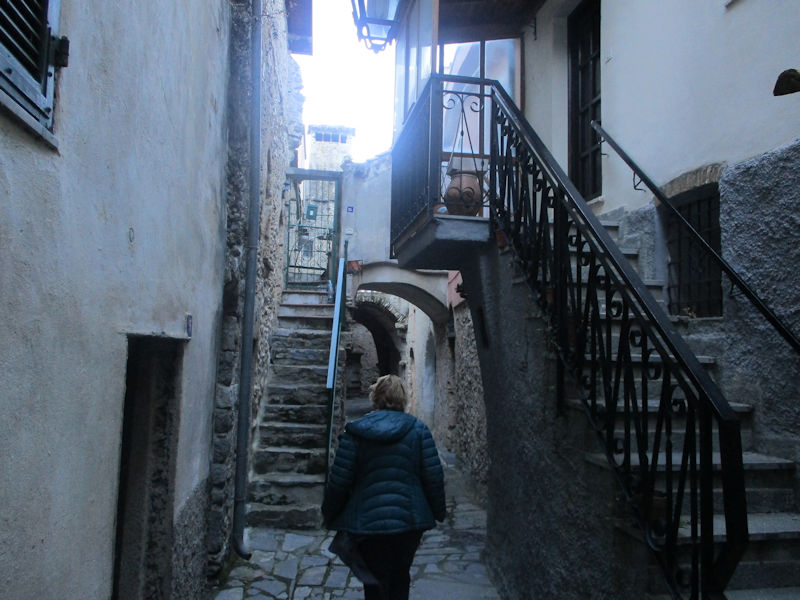
Uphill a ways towards the Via Castello
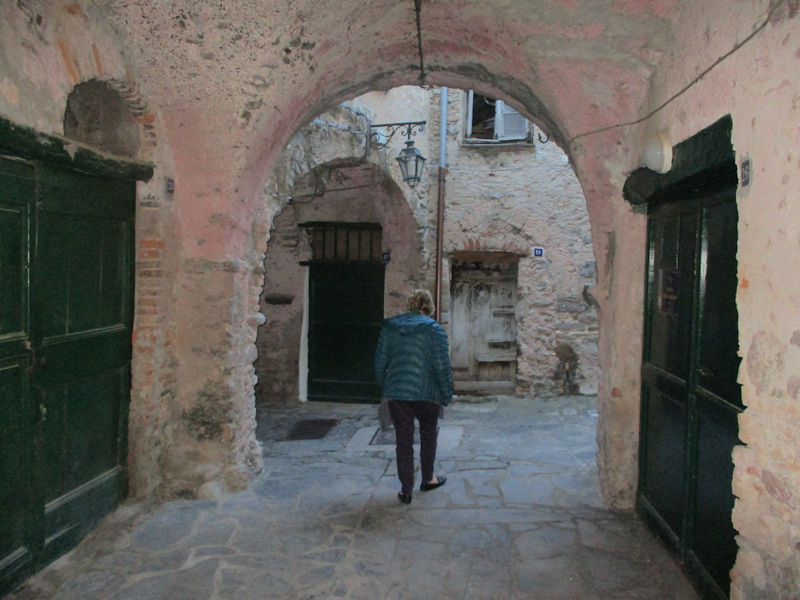
Zuccarello street scenes
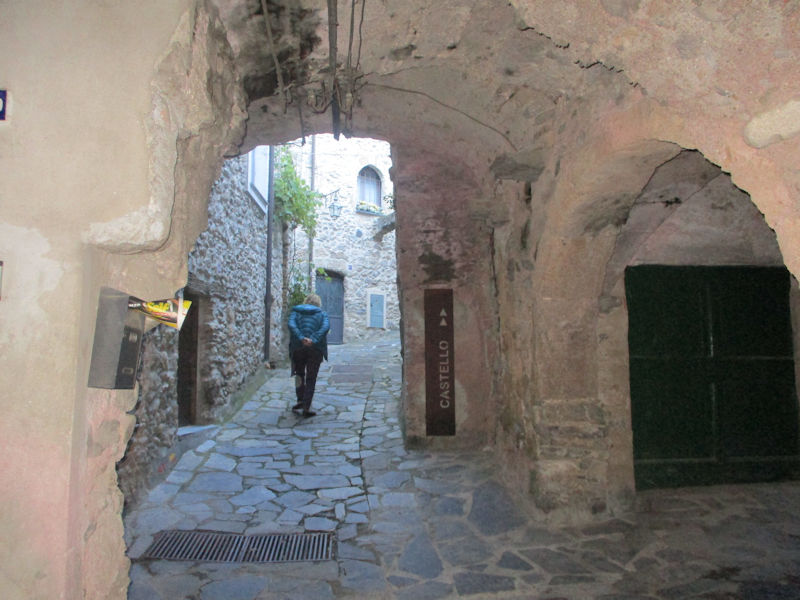
Helpful 'signage'
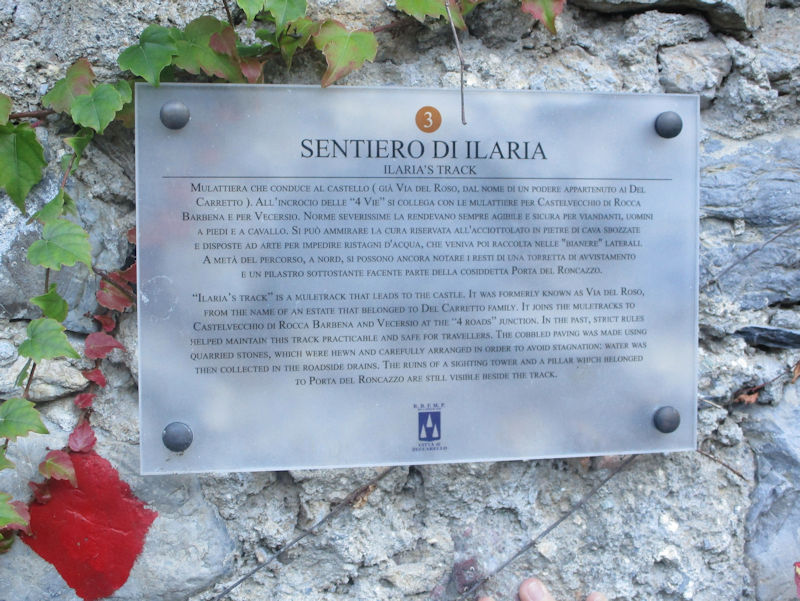
At the edge of the village, this is the Sentiero di Ilaria, or Ilaria's muletrack, the ancient rock-paved path a couple of kilometres up the hill to the Castello di Zuccarello, or Castello del Carretto (of which there are many so named around here). At the top of the hill, the track reaches an intersection with a number of other paths leading off to other nearby villages, including Castelvecchio di Rocca Barbena.
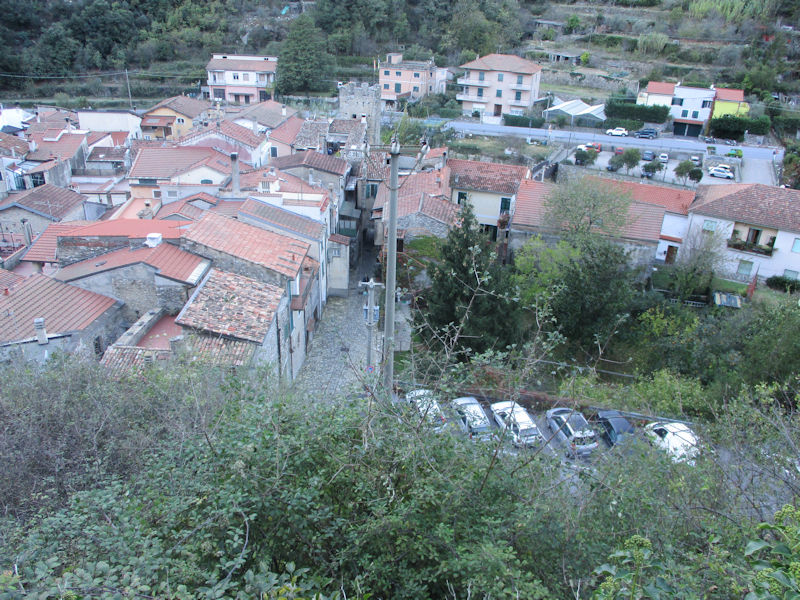
We're meant to believe that young Ilaria, growing up in Zuccarello, used to love to ride her mule up this track -- not so the rest of our party (with or without the mules), who will await our hurried return in that cute little Volvo at the left end of the carpark just below.
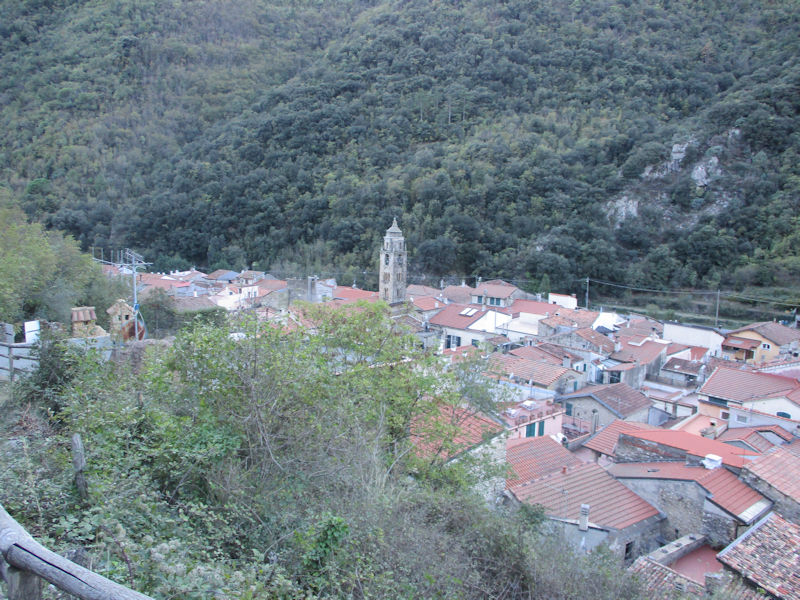
St Bart's
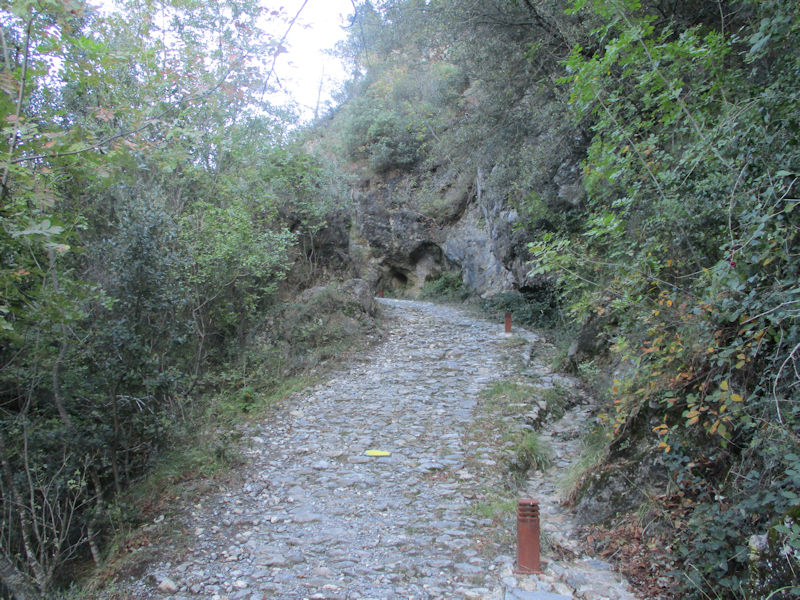
Up the old track we go, just like a medieval mule. At about this point, we were thinking 'this has got to be very near the top' -- subsequently, dashing down so as not to keep our party waiting, we were thinking 'this has got to be very near the bottom' and realized it was the same spot. The human mind is a wonder.
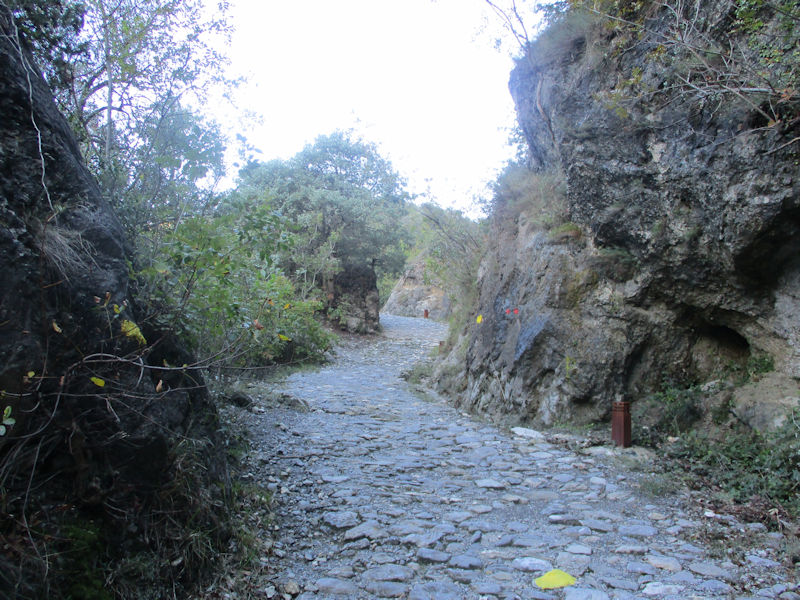
This has got to be very near the top!
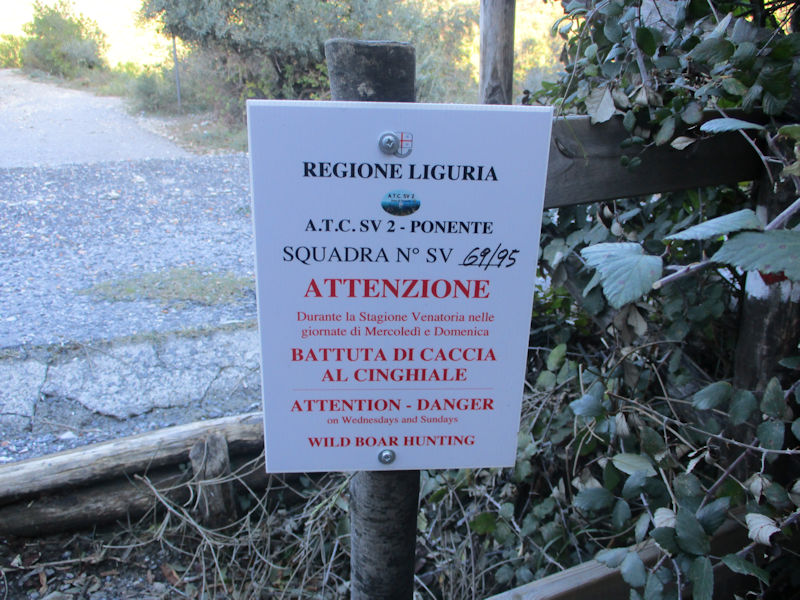
Now they tell us! The road and paths from this intersection lead off through the mountains to nearby destinations.
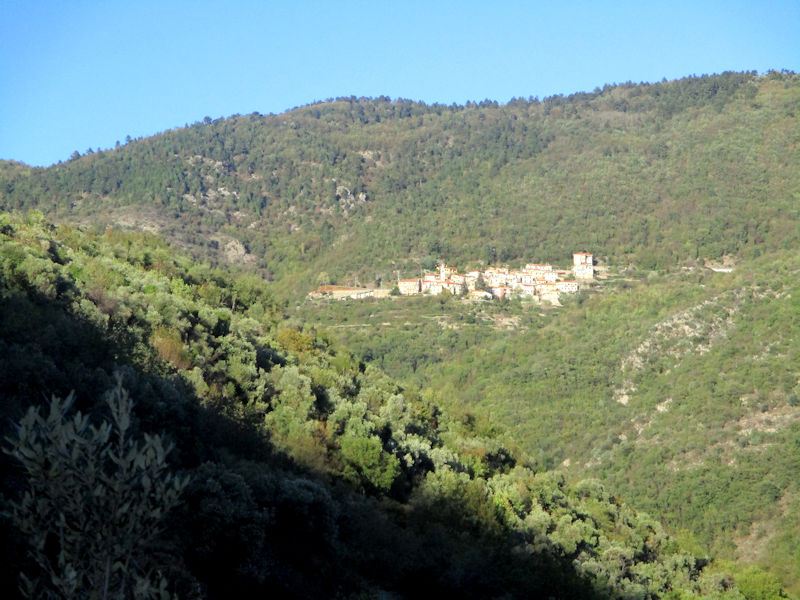
Like that one, perhaps. After later consultations with a map, that's likely Vecersio, a village of 60 inhabitants that belongs to the municipality of Castelvecchio di Rocca Barbena 1.5km away.
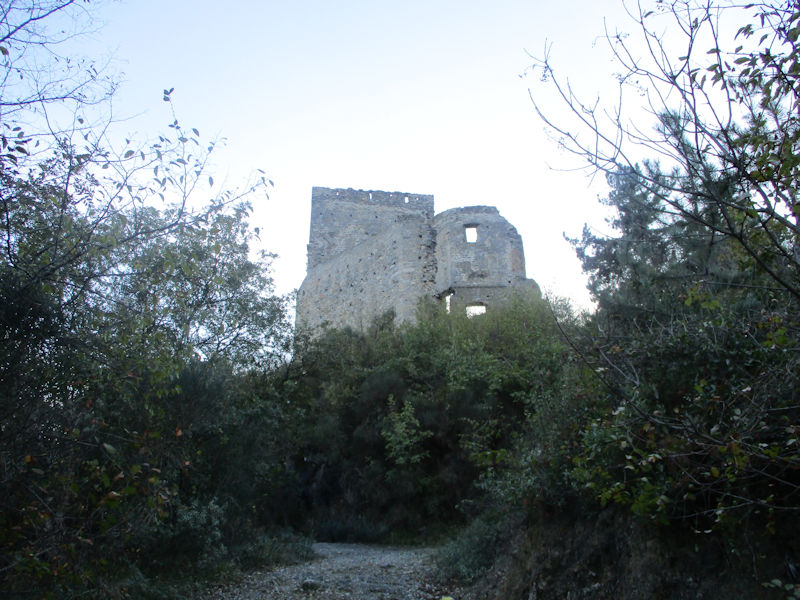
Here's our castle at last, or what's left of it.
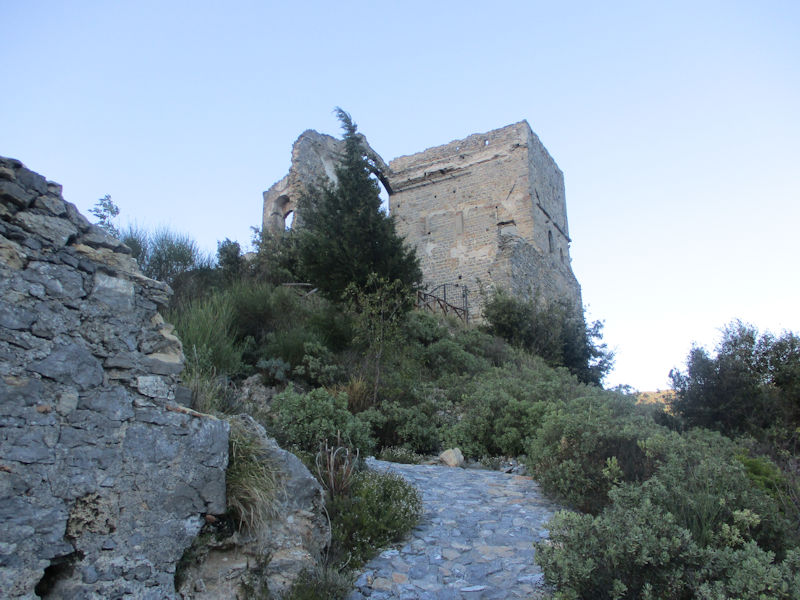
The castle, in some form, originated here at a very early date but was first mentioned in the early 1200s. The Marquises Del Carretto had it outfitted as a residence, in case they needed to desert their fancy place in the village for some reason. When the Zuccarello Carretto line, which had for some time been selling off parts of the fiefdom to the Savoyards and the Genoese, finally sold off the rest of it to Genoa, there was a so-called 'Salt War' between Savoy and Genoa which was finally decided by the Emperor's legal commission in Genoa's favor in 1633.

What a wreck -- nice path up to it, though.
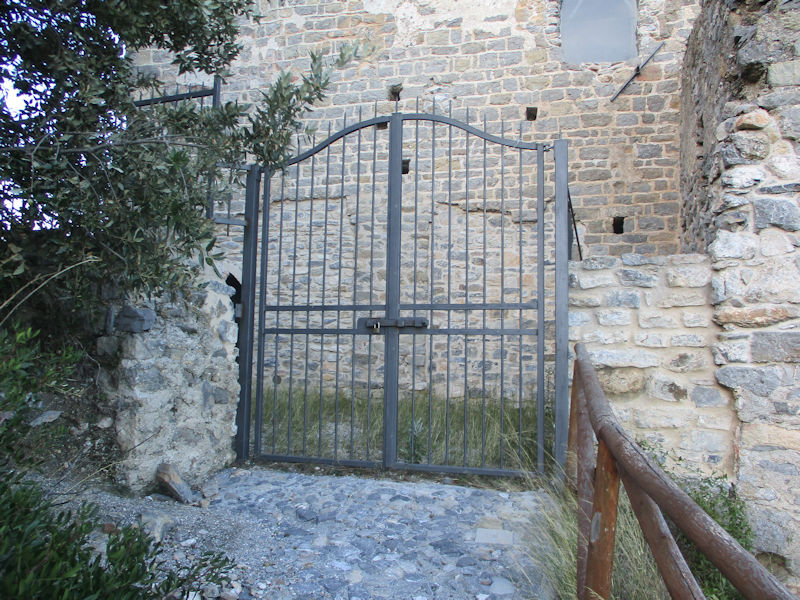
Locked up tight, of course.
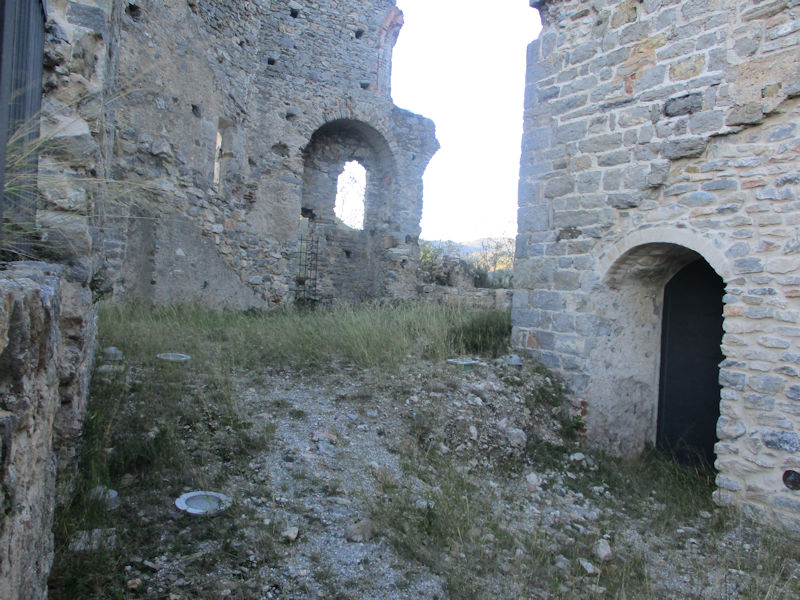
The Genoese used the castle as a military stronghold, and as such it suffered under two destructive sieges in the 17th and 18th centuries. In November 1795, it was occupied and somewhat rehabilitated by Napoleon's General Massèna at the time of the battle of Loano in the War of the First Coalition.
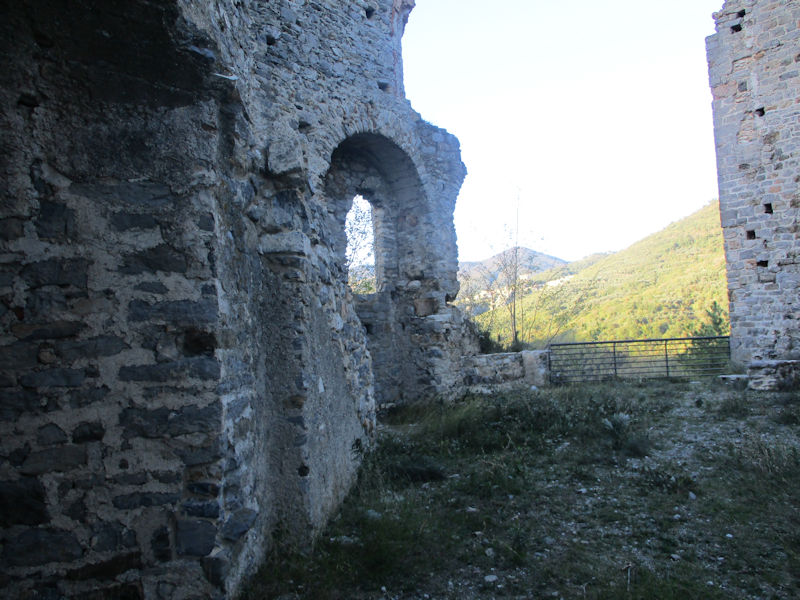
The ruins of the castle have undergone a nice clean-up in 2009 and can apparently be got into if you show up at a more suitable time.
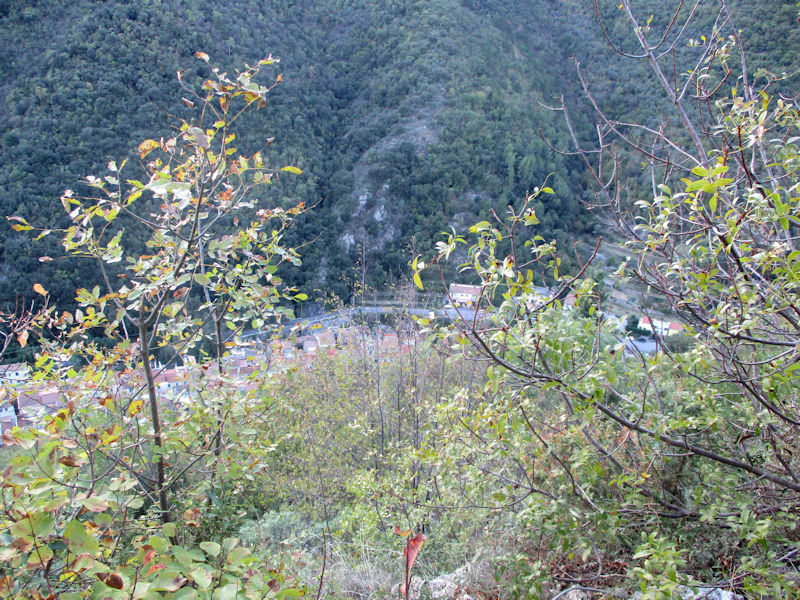
Zuccarello below us
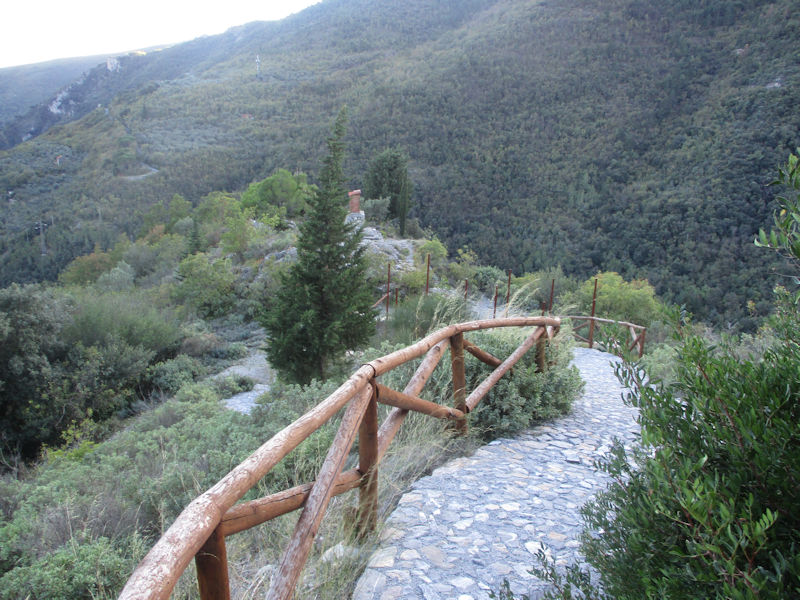
Back down the ridge upon which the castle ruins stand

Pleasant countryside
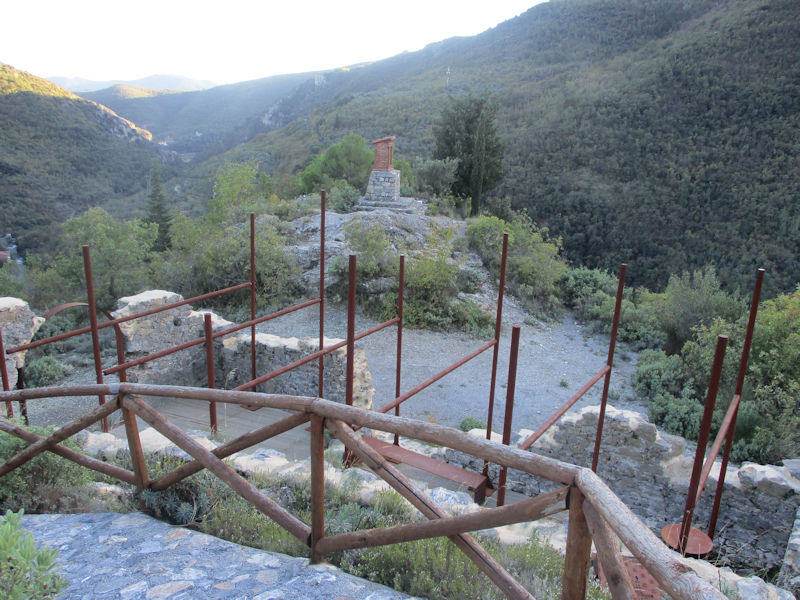
 Dwight Peck's personal website
Dwight Peck's personal website































































